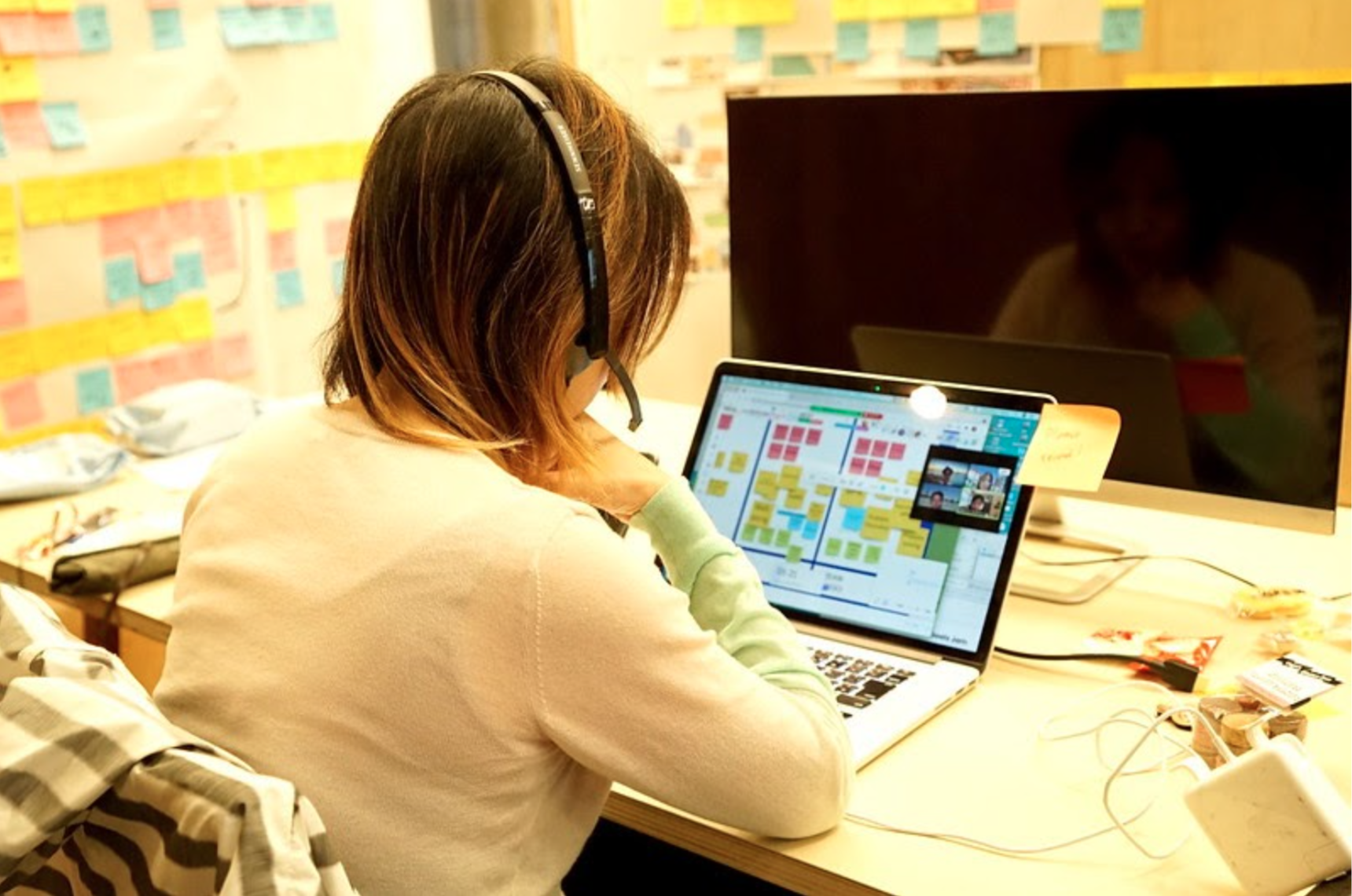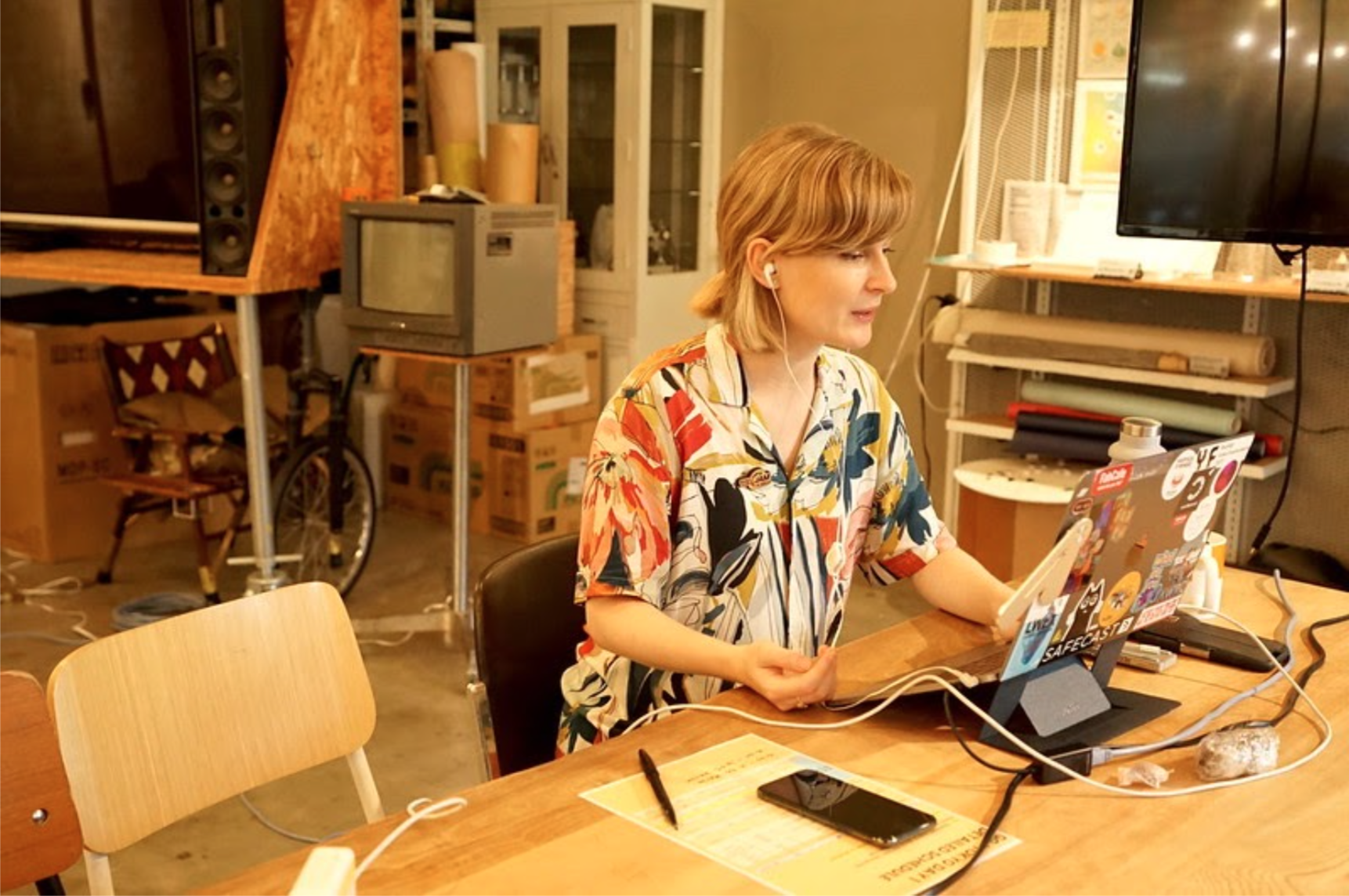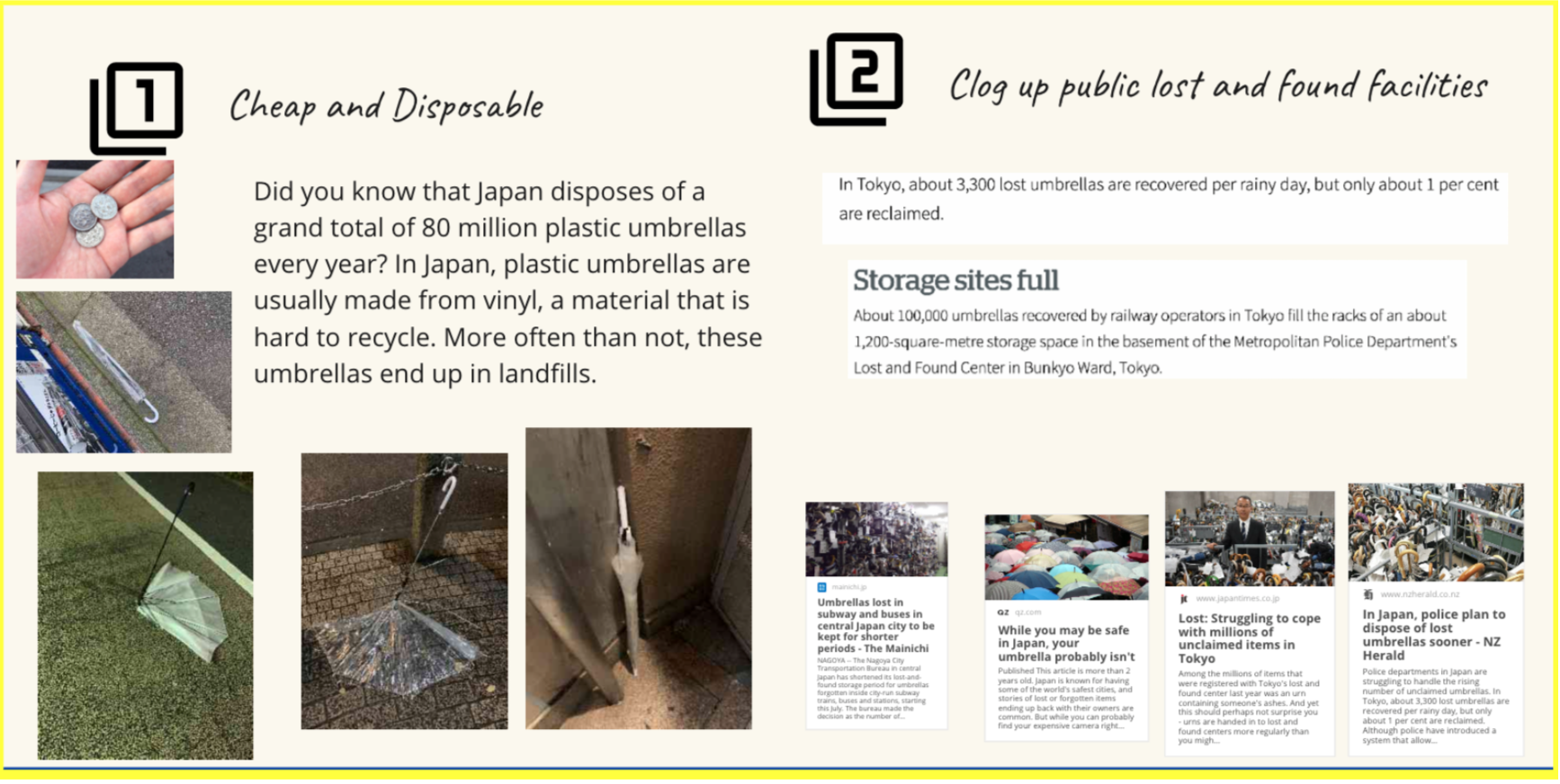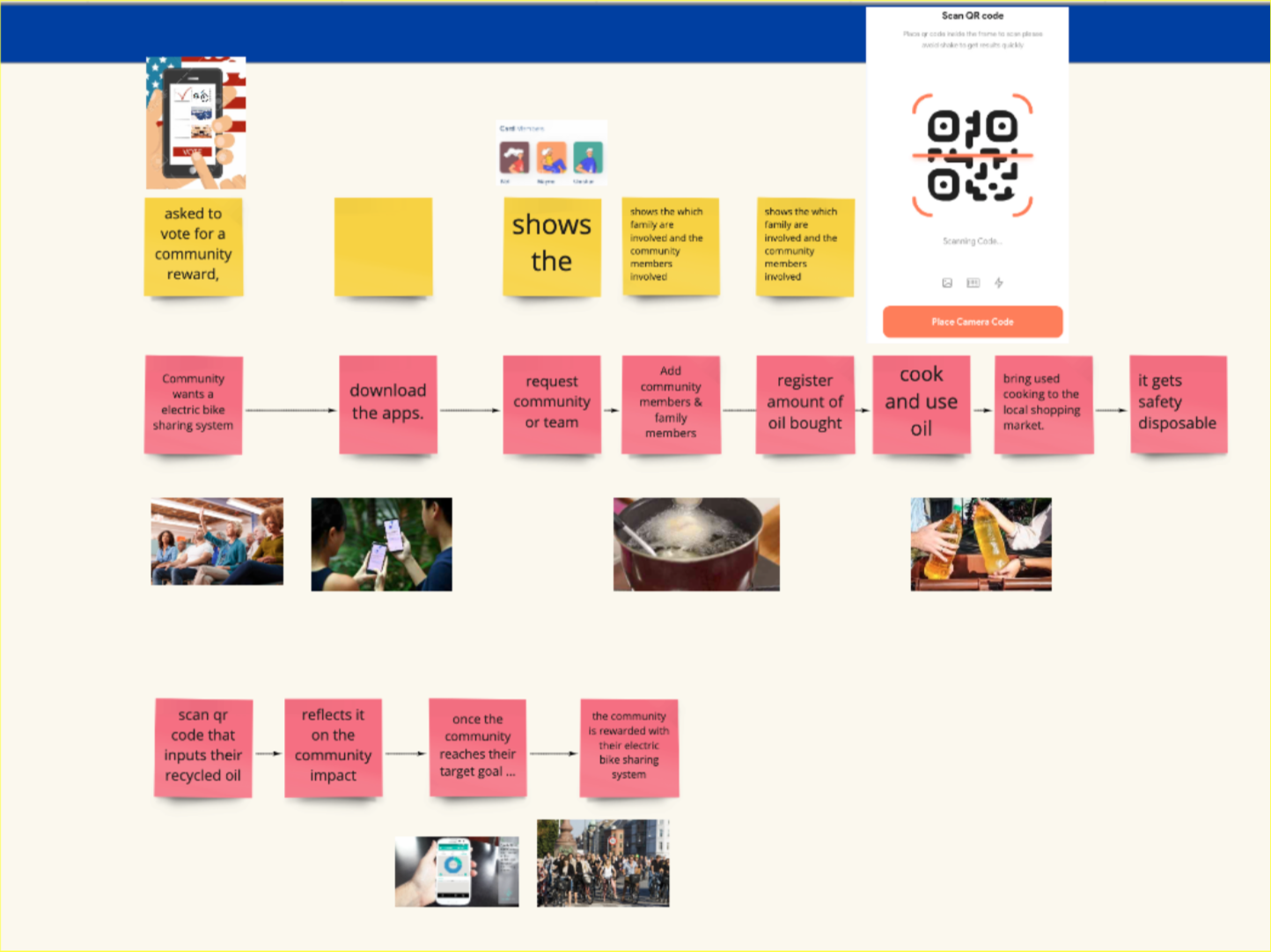Event report
October 31, 2021
David Willoughby
Freelance Writer
Have we reached Peak City? As remote working becomes standard practice and anxiety lingers around close-proximity living, it’s tempting to predict a flight from cities this decade.
Until now, cities have been seen as the product of a natural human desire to flock together. Meanwhile, sustainability in an urban context has meant solving problems like pollution and waste management that cities tend to create.
But a new idea is gaining ground: the regenerative city. In this model, cities become net contributors of resources such as energy, nutrients and upcycled waste, rather than net consumers. Instead of simply mitigating the impact of cities, the focus shifts to making cities a net-positive for the natural environment, so that urban dwelling becomes once again the natural choice for human beings.

“Density is not the enemy,” says Haruka Miki-Imoto, an Operations Officer at the World Bank. She wants people to focus on building the right cities, not retreat from the urban project. Haruka is speaking at this year’s Global Goals Jam in Tokyo, one of 80+ events held simultaneously in cities worldwide, which bring citizens together to tackle issues around the UN Sustainable Development Goals (SDGs).
Haruka spends most of her time advising fast-growing cities like Kinshasa on how to create systems for solid waste management. The contrast with Tokyo could not be more obvious. Tokyo, as arguably the world’s first megacity, put critical infrastructure in place decades ago. As such, Japan is making good progress towards its targets for SDG11: Sustainable Cities and Communities. Amenities like housing, transportation and disaster prevention are taken for granted in Tokyo and other Japanese cities.

However, after factoring in other relevant SDGs, it’s clear that Tokyo is far from being a regenerative city. Japan faces “major challenges” around SDG13: Climate Action and its progress is “stagnating” according to the UN. Tokyo, like Japan as a whole, relies on fossil fuel imports for more than 85% of its energy needs. Progress on renewables has been slow, while nuclear is off the agenda since the 2011 Fukushima disaster.
Despite its headstart in municipal recycling, Japan also faces “significant challenges” around SDG12: Responsible Consumption and Production. The lack of data on Japan’s progress towards this SDG points to few policy initiatives and low public awareness around ethical consumption and the circular economy. As we’ll see later in this report, it’s also an area where citizen-led interventions like Global Goals Jam can have an impact.

Editor and urbanist Mariko Sugita helped organise the first GGJ Tokyo in 2017 and is another of our guest speakers this year. In keeping with the theme of the regenerative city, Mariko wants us to consider ways to turn cities, which are engineered to be a “paradise for human beings”, into places that support other forms of life as well.
Mariko is a co-founder of for Cities, a collective that promotes grass-roots action for urban change. Their aim is to foster a “community of critical urbanists”. Can it work in Tokyo? It has worked before. Citizen activism played a major role in making Tokyo a more livable city in the past. More on that later – but first, let’s see how the teams got on.

With Tokyo still under a state of emergency, this year’s GGJ took place online for the second year in a row. That allowed a wider range of participants than usual, including people living in more remote parts of Japan that have a symbiotic relationship with the capital. Around 30 people joined the two-day event, among them design professionals, company employees and university students.
The main collaboration tools this year are Zoom breakout rooms and a Miro online whiteboard for sharing and presenting ideas. One of the GGJ facilitators sitting in Loftwork’s Shibuya office observes a heightened familiarity with these digital tools, such as Zoom and the online whiteboard, Miro, which most people now take to intuitively in a way they didn’t before the pandemic.

Teams are decided in advance, so the first session on Day 1 sees each team map their individual goals, values and skills on a Team Canvas. Following Inspiration Talks from the speakers highlighted above, teams then get to work developing their challenge statements based on the theme of regenerative cities:
How might we create a more healthy and sustainable relationship with nature? How do we close the loops of our urban systems and communities?
How might we design our cities as ecological systems, so that they not only become sustainable but actively contribute to a thriving planet?
Several teams zero in on responsible consumption as an area where citizens in Japan are poorly served and need more help to make sustainable choices in their daily lives. It’s noted that people in the Edo period managed a sustainable, low-waste lifestyle, so why not now?
Bringing nature back into the city and strengthening Tokyo’s connection to rural areas also emerge as themes in some discussions. It’s quickly apparent that this requires a multiple-stakeholder approach. With that, it’s time for each team member to do some deep-dive research before the group reconvenes the next morning.

Teams regroup in Day 2 to share their research and refine their challenge. This includes completing an Actant Map to identify both human and non-human stakeholders.
At this stage, teams must decide which of several competing ideas they will develop into a Concept Sketch. Dot-voting is the preferred method here – team members can distribute their votes evenly among several promising ideas, or throw all their support behind just one.
A Concept Sketch is some way short of a Prototype. It’s a way for teams to make a quick presentation of their idea to other teams and gather feedback in the form of questions or suggestions. The next stage, Prototyping, involves building a working model, video, or other demonstration of how the idea works in practice. Then it’s on to the final presentations.
Umbrella Day
The first team presents a community-based sharing system for disposable umbrellas, a major waste disposal headache for Tokyo municipalities. Each year Japan disposes of 80 million plastic umbrellas, which are difficult to recycle and often end up in landfill. Umbrella Day would establish designated community areas to keep umbrellas in storage for when they are needed. View details

ReFoods
ReFoods aims to solve two problems. First, how to get non-standard (so-called “ugly”) food from producers. Second, how to make a service that’s attractive enough for consumers. The result is a series of DIY kits comprising different recycling or repurposing ideas for different foods. The kits would be available for home delivery and are designed to promote behaviour change around food waste in Japan. View details

KOREKUTO
Another team prototyped an app that helps communities set up their own recycling programmes for used cooking oil. Waste kitchen liquid is a threat to Tokyo’s maritime life, with cooking oil the worst offender. One thing we liked is that KOREKUTO gives neighbourhoods full ownership of their recycling programmes and lets them distribute their own choice of rewards to the most active participants. View details

On-the-go Gardening
This urban greening concept would give Tokyo commuters responsibility for looking after plants along their route. Funded by business sponsorship, On-the-go Gardening uses technology to show when plants are sufficiently watered. In a city where many residents lack space or time to commune with nature, the idea is to introduce gardening spots along common touchpoints in everyday life. View details

Sister Stations
This concept aims to build relationships between urban Tokyo and rural areas of Japan. The idea is to provide opportunities for city-dwellers to learn about the skills and lifestyles practiced by farming communities. This is achieved through a blend of digital technology, hydroponic farming, and environmental design, including soundscapes. Surprisingly, the concept derived from a simple observation that Tokyo commuters are too attached to their smartphones. View details

Nature Rate
The final team demonstrates a QR code-based mobile app called Nature Rate that empowers consumers in Japan by giving them access to sustainability ratings for products. The team was inspired by the “radical transparency” practices of the brand Everlane, which not only reveals the carbon footprint and materials used in fashion items, but also addresses ethical issues in the supply chain. Nature Rate would be promoted with an ethical fashion show. View details

Sustainability in Japan: who participates?
This year’s GGJ was a reminder that, even under a state of emergency, there’s an appetite for civic engagement in Japan. In contrast to the slow pace of institutional change, events like GGJ give citizens a platform for action and create the “community of critical urbanists” that Mariko Sugita identified. She also thinks these communities should be “breathable” with people free to enter and leave.
History offers some lessons here. At their peak in the 1970s, neighbourhood and consumer associations were instrumental in closing Tokyo’s landfills, enacting municipal recycling, and curbing Japan’s industrial polluters. But the fabric of this civic society – with full-time housewives playing a key role – gradually eroded or lost relevance for younger generations. More open-source forms of activism might fill the gap left behind.
Meanwhile, Japan’s corporate sector has been promoting its own vision of sustainability, one that prefers a soft regulatory environment and minimal input from citizens. This sustainability-lite – business-as-usual with some gestures towards the environment – falls woefully short of the regenerative ideas discussed at this GGJ or the actual climate emergency facing our planet.
Events like GGJ, and similar hackathons and designathons at FabCafe, ask important questions about who gets to participate in sustainability and urban design. They show that civic engagement needn’t be a lifelong commitment for a few – it can become an acquired habit for many.

Comments from participants
“GGJ was like a big melting pot of ideas – so inspiring! I loved all the creativity and positive energy from participants, facilitators and organising team. Even though it was all online this year, it felt like a real community event.” Nick Ashley, Sustainability Consultant & GGJ Tokyo facilitator
“It was well coordinated, and thanks to the (online) tools available we were able to come up with a consolidated idea in one day. I didn’t expect that, so it was a beautiful surprise.” Hasumi Nemani, FoundingBase & GGJ Tokyo jammer
“It was so inspiring to see a community of people with so many different backgrounds and perspectives all in one place. I learned a lot myself from their output, and I believe that everyone had a fruitful time learning from each other.” Mariko Sugita, for Cities & GGJ Tokyo guest speaker
“Jammers’ presentations highlighted how moving toward material circularity, and bringing the harmonious relationship between cities and nature not only serves to achieve SDGs but enhances citizens’ well-being and happiness. Many prototype examples tried to silo-break different sectors, re-design and connect technologies and existing urban infrastructures, and bring fun and joy when practicing circularity.” Haruka Miki-Imoto, World Bank & GGJ Tokyo guest speaker
“Every year, GGJ offers the opportunity to open a window into local sustainability challenges through the unique and rare lens of very passionate local people. With the Tokyo Olympics having only just recently come to a close, this year’s theme, Regenerative Cities, was an especially inspiring and timely topic to dive into. As Jammers dug into the urban challenges of the chameleon-like metropolis, Tokyo, restorative solution ideas naturally popped up through a shared feeling that something is missing in Tokyo. In other words, Jammers felt the need to fill a need. We need a solution where wasted umbrellas turn into gold, we need a solution that addresses the dire challenge of cooking oil pollution in Tokyo right now, we need solutions that enhance our relationship with nature from the bottom up.
Furthermore, GGJ teams not only considered the challenge of improving city dweller’s quality of life- but identified seriously the non-human stakeholders involved, considering the well-being of the ecosystem as a whole. The formidable challenges of climate change can feel too big to address by oneself. At GGJ this year, we proposed an experience that solidifies our commitment to our planet, the planet of non-human creatures, natural elements, and also humans.”
Kelsie Stewart, FabCafe Chief Community Officer & GGJ Tokyo organiser
-
David Willoughby
Freelance Writer
David thinks and writes about sustainability, technology and culture, and has reported on many of our hackathons, talks and other events. He also works with Japanese companies to help tell their stories to the world.
David thinks and writes about sustainability, technology and culture, and has reported on many of our hackathons, talks and other events. He also works with Japanese companies to help tell their stories to the world.


